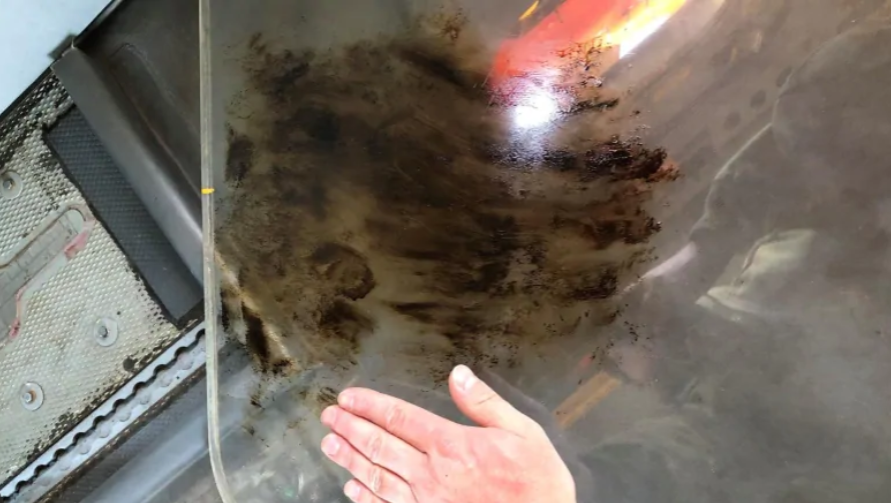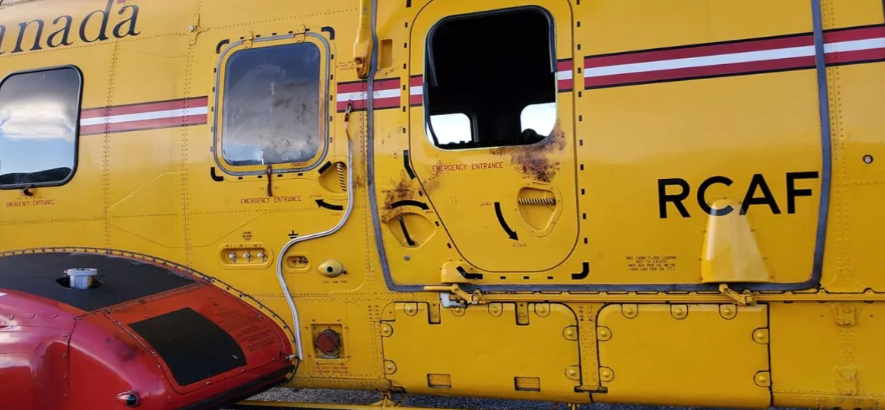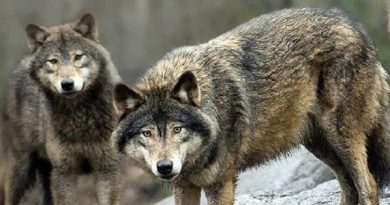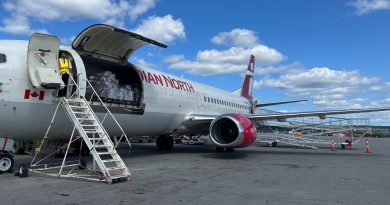Polar bear damages search and rescue chopper in northern Canada

Chalk it up to the perils of parking overnight on the tarmac of a northern airfield in Canada.
A CH-149 Cormorant search and rescue helicopter was damaged earlier this month by what appears to have been a puzzled polar bear in search of a meal.
The aircraft belong to 413 Squadron, which is based in Greenwood, N.S. It spent the night at a remote air strip in Saglek, Newfoundland and Labrador on Sept. 16, according to the air force’s official Twitter account.
Poor weather over northern Labrador on that day had prevented the crew from reaching their preferred landing site, which was not identified.
In the darkness, the bear chose to conduct an inspection of the brightly painted helicopter, causing what the air forces said was “superficial damage” when it pushed on the side door.
The bear managed to pop out an emergency exit window and rip the cover off the nose cone.

“The polar bear did not get inside the helicopter and there were no crew members in the vicinity at the time,” said the air force’s Twitter post, which was accompanied by a series of photos that show the damaged side of the helicopter and the window with an oily paw smear.
Helicopter participating in search and rescue exercise
Saglek is located in the Torngat Mountains and was originally built as a U.S. Air Force base in the 1950s at the beginning of the Cold War.
It was later handed over to the Canadian military and is now home to an automated long-range radar station that forms part of NORAD’s North Warning System.
The nearby Saglek Fjord — known by local fishermen as “The Devil’s Place” because of its ever-changing winds — was profiled last spring in National Geographic magazine as “the best place in the world to see polar bears.”
The Cormorant helicopter was participating in a northern search and rescue exercise.
The air force said the crew inspected the damage, conducted repairs and continued the two-week mountain training exercise.
Related stories from around the North:
Canada: Canadian hunter survives 4 days on the land with no food, plenty of polar bears, CBC News
Norway: Polar bear kills Dutch citizen on Norway’s remote Svalbard Islands, The Independent Barents Observer
Russia: Scientists raise alarm about polar bears’ plastic consumption in Arctic Russia, The Independent Barents Observer



